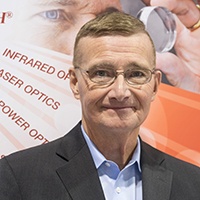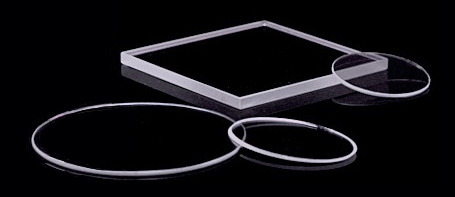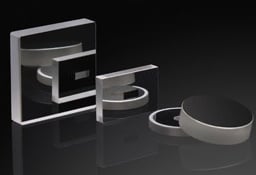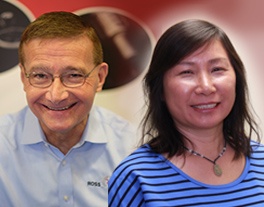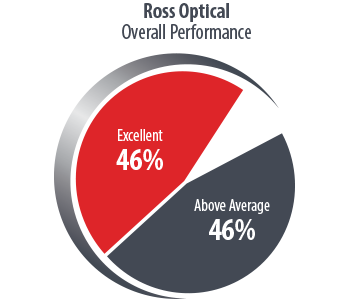Charlie has been in the optics business for over 40 years and with Ross for 8. With a background in industrial engineering, Charlie enjoys interacting with engineers in their element—getting out on the shop floor and talking technical details in order to help customers manufacture better products.
Read More >Ross Team
Recent Posts
Meet the Team: Charlie Metzger, Technical Sales Engineer
FAQ: Tolerances & Tips for Super-Polished Optics
What is super-polishing?
Super-polishing is a new classification for optical surface quality, sometimes referred to as "atomically smooth." By this we mean surface roughness features that can be measured in Angstroms, which are ten times smaller than nanometers. A single hydrogen atom is roughly 1 Å in diameter, so super-polishing really is “atomic.” By comparison, a λ/100 specification is 6 nm.
Read More >Cleaning Optical Mirrors vs. Lenses: 3 Key Differences
The recommended procedures for cleaning optics are largely the same whether you are working with lenses or mirrors. The typical cleaning process involves first blowing dust and dirt off the optical component with pressurized air, then using the drag method to slowly move moistened lens paper across the optical surface. We’ve previously shared tips for avoiding damage during optical cleaning. However, a few key differences make mirrors more susceptible to accidental damage.
Read More >Providing Optical Design Support During the Contract Development Process
At Ross Optical, we take pride in our reputation for outstanding customer support. A big reason for our customers' satisfaction is how we handle customers before they are our customers. Many optical suppliers require contracts and commitments before they will help a customer with design issues. At Ross, we think that's backward. Getting to the best design can take some time, and we prefer to help our customers overcome those design hurdles before committing to an order. The design collaboration process varies from customer to customer, but it typically goes something like this:
Read More >2017 Survey: Ross Optical Continues to Meet Customer Service, Quality and Delivery Needs
Meeting Needs, By the Numbers
We just completed our 2017 customer survey, and Ross Optical once again received high marks for customer service, technical expertise, quality and delivery. On overall performance, 92% of customers rated Ross above average or excellent.
Read More >Outsourcing Optical Assembly: 4 Cost Considerations
Optical assembly is an important step in the production of an optical system—as well as a major cost driver. As we’ve previously discussed, designing optics with assembly in mind can ease the transition from prototype to final product and save money in the long run. But beyond design, the “who” and “where” of assembly can also affect price.
Controlling Cost for Large Optics
Generally speaking, a "large" optic is anything with dimensions exceeding 10 cm. Designing a large optical system is not intrinsically harder than designing a smaller system, but the stakes are higher. The classic example of a large optics project gone wrong is the Hubble Space Telescope, in which an error in metrology resulted in a mirror that was made "exactly wrong" to very high precision.
Keep in mind that, when designing a system that includes large optical elements, the effects of the usual cost factors increase and some new factors appear. The following design points will help.
Read More >From R&D to Inventory Solutions: Improving Product and Supply Chain Performance for Analytical Instruments
Over the last several years, Ross Optical has worked closely with the engineering and purchasing team at Microtrac to provide custom optics that support their particle analysis instruments.
Read More >Three Opto-Mechanical Design Challenges
Opto-mechanics refers to the mechanical design of optical systems. Opto-mechanical design is sometimes dismissed as little more than "wrapping metal" around the optics, but that perspective is detrimental to building the best operating optical instrument.
Read More >Improving Delivery of Optics through Kanban
Kanban, a method used to visualize and optimize workflows, has long been a key part of Ross' processes. Kanban has 5 core properties: (1) visualize workflow, (2) limit work-in-progress, (3) manage flow, (4) make process policies explicit, and (5) improve collaboratively. At Ross, we help you with 3–5 so that you can focus on 1 and 2. When managing and delivering optics inventory to customers, we aim to:
Read More >SUBSCRIBE VIA EMAIL
Recent Posts
POSTS BY TOPIC
- optical design (29)
- supply chain / inventory management (19)
- optics applications (14)
- standard optics (14)
- meet the team (11)
- optical assemblies (11)
- custom optics (10)
- micro optics (10)
- quality management (10)
- news (9)
- optical coating (6)
- medical optics (5)
- events (4)
- aspheres (3)
- cleaning optics (3)
- optical metrology (3)
- achromatic doublets & triplets (2)
- endoscope (2)
- mechanical engineering (2)
- Infrared (1)
- endoscopic test (1)
- large optics (1)


